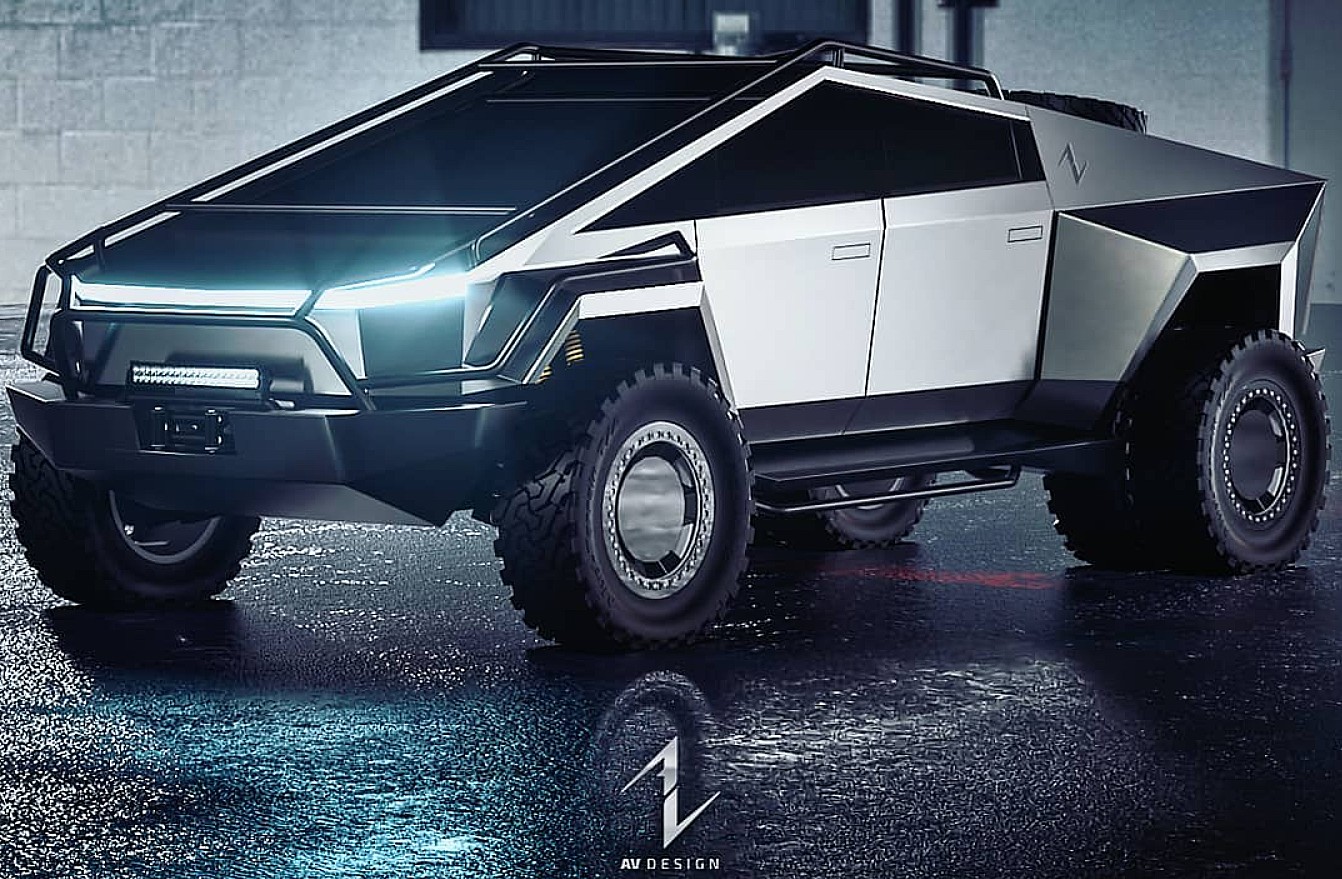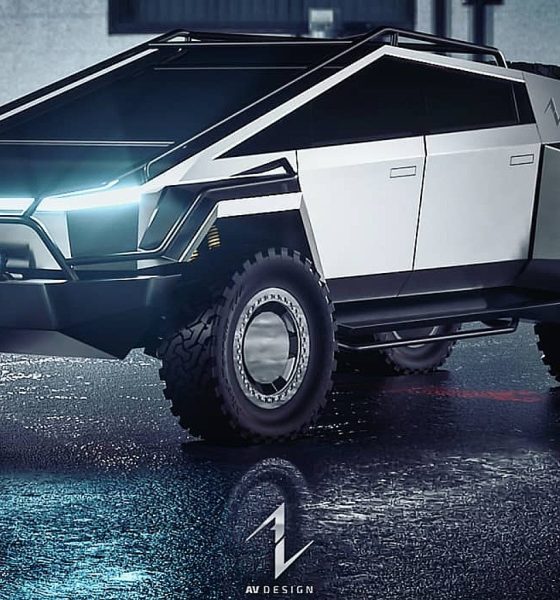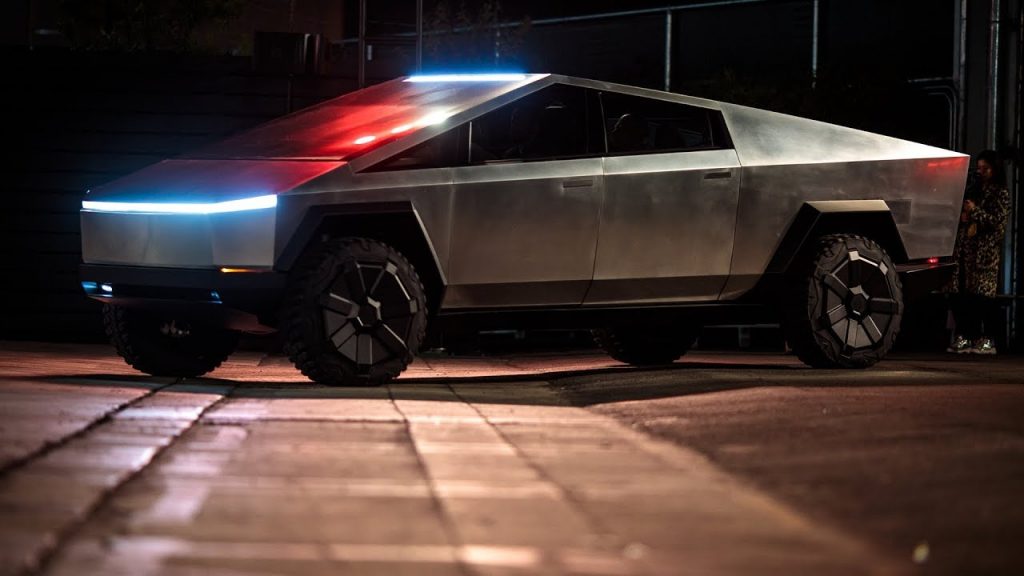

News
The Tesla Cybertruck is gaining respect among real pickup truck owners
The Tesla Cybertruck is arguably one of the most controversial vehicles to come out of the auto industry in recent years. Designed unlike any other pickup in the market, the Cybertruck was so polarizing that it resulted in both acclaim and outright hate when it was unveiled. Yet if the results of a recent analysis from Loup Ventures are any indication, it appears that the Cybertruck may be more welcome in the mainstream market than previously thought.
Following the Cybertruck’s unveiling last November, Loup Ventures Managing Partner Gene Munster remarked that the all-electric truck’s radically-different design would likely end up discouraging conventional pickup owners from buying the vehicle. More recent observations from real truck owners in the midwest have proven this thesis wrong.
In a recent update on Loup Ventures’ official website, Munster noted that after speaking with several construction professionals who use pickup trucks for their work, it is now evident that Tesla actually hit the mark with the Cybertruck pretty well. Among the 22 truck owners who were part of the firm’s analysis, 2/3 were positive or at least neutral when it comes to all-electric pickups. Ten even noted that their next vehicle would be electric.

Five of the pickup truck veterans actually stated that they plan to purchase a Tesla Cybertruck within the next five years, higher than the firm’s expectations. The Cybertruck’s brutalist design also seemed to be a complete non-issue for the vast majority of the construction professionals in Loup Ventures’ analysis. When asked if they will be embarrassed to show up to work site in a Cybertruck, for example, only 3 of the 22 said that they would have reservations about the vehicle’s design.
These results crush some of the bearish points against the Cybertruck that emerged since the vehicle’s unveiling. The idea that the pickup will be considered embarrassing by professionals due to its design, for one, was pushed by TSLA bears ardently due to the vehicle’s brutalist, sci-fi theme. Yet if Loup’s findings are any indication, it appears that the Cybertruck’s polarizing looks will not turn off the vast majority of buyers at all.
This is not to say that Tesla has no area of improvement with the Cybertruck’s marketing. If any, it appears that the electric car maker needs a better strategy when it comes to informing potential customers of the all-electric truck’s price. When Loup Ventures asked the construction professionals about their estimates on the Cybertruck’s compared to a base, $29,000 Ford F-150, the average quote from the longtime pickup buyers was $84,000. The median of the truck owners’ estimates about the Cybertruck’s cost was $80,000, and it ranged from $45,000 to $220,000. This is very far from the actual price of the Cybertruck, which starts below $40,000 with basic Autopilot.
If there’s anything that can be determined from Loup Ventures’ recent analysis, it is that the Cybertruck may actually end up tapping into a much larger market than initially expected. While the vehicle seems to be designed for a niche segment, its price and features might be enough to make it a compelling alternative for petrol-powered pickups like the Ford F-150. With these results in mind, Munster has adjusted Loup’s estimates for the vehicle, with the finance veteran stating that the truck will likely account for 15% of Tesla’s units in its fully ramped year, far more than the firm’s initial 5% estimate.

Elon Musk
Starlink passes 9 million active customers just weeks after hitting 8 million
The milestone highlights the accelerating growth of Starlink, which has now been adding over 20,000 new users per day.

SpaceX’s Starlink satellite internet service has continued its rapid global expansion, surpassing 9 million active customers just weeks after crossing the 8 million mark.
The milestone highlights the accelerating growth of Starlink, which has now been adding over 20,000 new users per day.
9 million customers
In a post on X, SpaceX stated that Starlink now serves over 9 million active users across 155 countries, territories, and markets. The company reached 8 million customers in early November, meaning it added roughly 1 million subscribers in under seven weeks, or about 21,275 new users on average per day.
“Starlink is connecting more than 9M active customers with high-speed internet across 155 countries, territories, and many other markets,” Starlink wrote in a post on its official X account. SpaceX President Gwynne Shotwell also celebrated the milestone on X. “A huge thank you to all of our customers and congrats to the Starlink team for such an incredible product,” she wrote.
That growth rate reflects both rising demand for broadband in underserved regions and Starlink’s expanding satellite constellation, which now includes more than 9,000 low-Earth-orbit satellites designed to deliver high-speed, low-latency internet worldwide.
Starlink’s momentum
Starlink’s momentum has been building up. SpaceX reported 4.6 million Starlink customers in December 2024, followed by 7 million by August 2025, and 8 million customers in November. Independent data also suggests Starlink usage is rising sharply, with Cloudflare reporting that global web traffic from Starlink users more than doubled in 2025, as noted in an Insider report.
Starlink’s momentum is increasingly tied to SpaceX’s broader financial outlook. Elon Musk has said the satellite network is “by far” the company’s largest revenue driver, and reports suggest SpaceX may be positioning itself for an initial public offering as soon as next year, with valuations estimated as high as $1.5 trillion. Musk has also suggested in the past that Starlink could have its own IPO in the future.
News
NVIDIA Director of Robotics: Tesla FSD v14 is the first AI to pass the “Physical Turing Test”
After testing FSD v14, Fan stated that his experience with FSD felt magical at first, but it soon started to feel like a routine.

NVIDIA Director of Robotics Jim Fan has praised Tesla’s Full Self-Driving (Supervised) v14 as the first AI to pass what he described as a “Physical Turing Test.”
After testing FSD v14, Fan stated that his experience with FSD felt magical at first, but it soon started to feel like a routine. And just like smartphones today, removing it now would “actively hurt.”
Jim Fan’s hands-on FSD v14 impressions
Fan, a leading researcher in embodied AI who is currently solving Physical AI at NVIDIA and spearheading the company’s Project GR00T initiative, noted that he actually was late to the Tesla game. He was, however, one of the first to try out FSD v14.
“I was very late to own a Tesla but among the earliest to try out FSD v14. It’s perhaps the first time I experience an AI that passes the Physical Turing Test: after a long day at work, you press a button, lay back, and couldn’t tell if a neural net or a human drove you home,” Fan wrote in a post on X.
Fan added: “Despite knowing exactly how robot learning works, I still find it magical watching the steering wheel turn by itself. First it feels surreal, next it becomes routine. Then, like the smartphone, taking it away actively hurts. This is how humanity gets rewired and glued to god-like technologies.”
The Physical Turing Test
The original Turing Test was conceived by Alan Turing in 1950, and it was aimed at determining if a machine could exhibit behavior that is equivalent to or indistinguishable from a human. By focusing on text-based conversations, the original Turing Test set a high bar for natural language processing and machine learning.
This test has been passed by today’s large language models. However, the capability to converse in a humanlike manner is a completely different challenge from performing real-world problem-solving or physical interactions. Thus, Fan introduced the Physical Turing Test, which challenges AI systems to demonstrate intelligence through physical actions.
Based on Fan’s comments, Tesla has demonstrated these intelligent physical actions with FSD v14. Elon Musk agreed with the NVIDIA executive, stating in a post on X that with FSD v14, “you can sense the sentience maturing.” Musk also praised Tesla AI, calling it the best “real-world AI” today.
News
Tesla AI team burns the Christmas midnight oil by releasing FSD v14.2.2.1
The update was released just a day after FSD v14.2.2 started rolling out to customers.

Tesla is burning the midnight oil this Christmas, with the Tesla AI team quietly rolling out Full Self-Driving (Supervised) v14.2.2.1 just a day after FSD v14.2.2 started rolling out to customers.
Tesla owner shares insights on FSD v14.2.2.1
Longtime Tesla owner and FSD tester @BLKMDL3 shared some insights following several drives with FSD v14.2.2.1 in rainy Los Angeles conditions with standing water and faded lane lines. He reported zero steering hesitation or stutter, confident lane changes, and maneuvers executed with precision that evoked the performance of Tesla’s driverless Robotaxis in Austin.
Parking performance impressed, with most spots nailed perfectly, including tight, sharp turns, in single attempts without shaky steering. One minor offset happened only due to another vehicle that was parked over the line, which FSD accommodated by a few extra inches. In rain that typically erases road markings, FSD visualized lanes and turn lines better than humans, positioning itself flawlessly when entering new streets as well.
“Took it up a dark, wet, and twisty canyon road up and down the hill tonight and it went very well as to be expected. Stayed centered in the lane, kept speed well and gives a confidence inspiring steering feel where it handles these curvy roads better than the majority of human drivers,” the Tesla owner wrote in a post on X.
Tesla’s FSD v14.2.2 update
Just a day before FSD v14.2.2.1’s release, Tesla rolled out FSD v14.2.2, which was focused on smoother real-world performance, better obstacle awareness, and precise end-of-trip routing. According to the update’s release notes, FSD v14.2.2 upgrades the vision encoder neural network with higher resolution features, enhancing detection of emergency vehicles, road obstacles, and human gestures.
New Arrival Options also allowed users to select preferred drop-off styles, such as Parking Lot, Street, Driveway, Parking Garage, or Curbside, with the navigation pin automatically adjusting to the ideal spot. Other refinements include pulling over for emergency vehicles, real-time vision-based detours for blocked roads, improved gate and debris handling, and Speed Profiles for customized driving styles.








